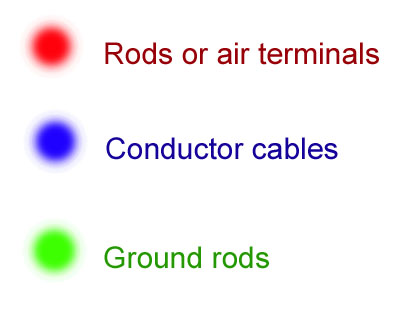Benjamin Franklin wrote about his experiments dealing with the similarities between electricity and lightning in five formal letters from 1747 to 1752. He addressed his letter to a Fellow of the Royal Society of London Peter Collinson, who provided him with equipments he needed. The English man published them in a pamphlet entitled Experiments and Observations on Electricity made at Philadelphia in America, by Benjamin Franklin and communicated in several letters.
In his first letters, Benjamin Franklin described “the wonderful effect of pointed bodies, both in drawing off and throwing off the electrical fire”. He showed that sharp points work better that blunt bodies. He proved that it is more efficient to use metal points than dry wood. Besides, the pointed object would be grounded in order to obtain a maximum draw effect.

In the second letter, Benjamin Franklin explained the electrical mechanism of the leyden jar, the first electrical capacitor. He started to use the term “charge” and “discharge” when describing the Leyden jar in the third letter. And he described an electrical battery which he used later to simulate the effects of lightning in a variety of material.

Based on his previous experiments with the power of point, in his fourth letter, Benjamin Franklin speculated that when an electrified cloud passes over a region, it will draw electricity and discharge high hills and trees, towers, chimney etc.
In his last letter, he attempted to explicate the power of point. Sharp points discharge silently and produce large effects at greater distance contrary to blunt bodies. Then, he stated what he called “Law of Electricity”: the point will tend to “draw on and throw off the electrical fluid with more or less power and at a greater or smaller distances, and in larger or smaller quantities in the same time” as the angle of point is more or less acute.
From his earlier experiments, Benjamin Franklin knew that tall objects were preferred places for lightning to strike. Therefore, even if the point discharges did not neutralize the cloud, grounded conductor would provide a safe path for the lightning to go to ground.








